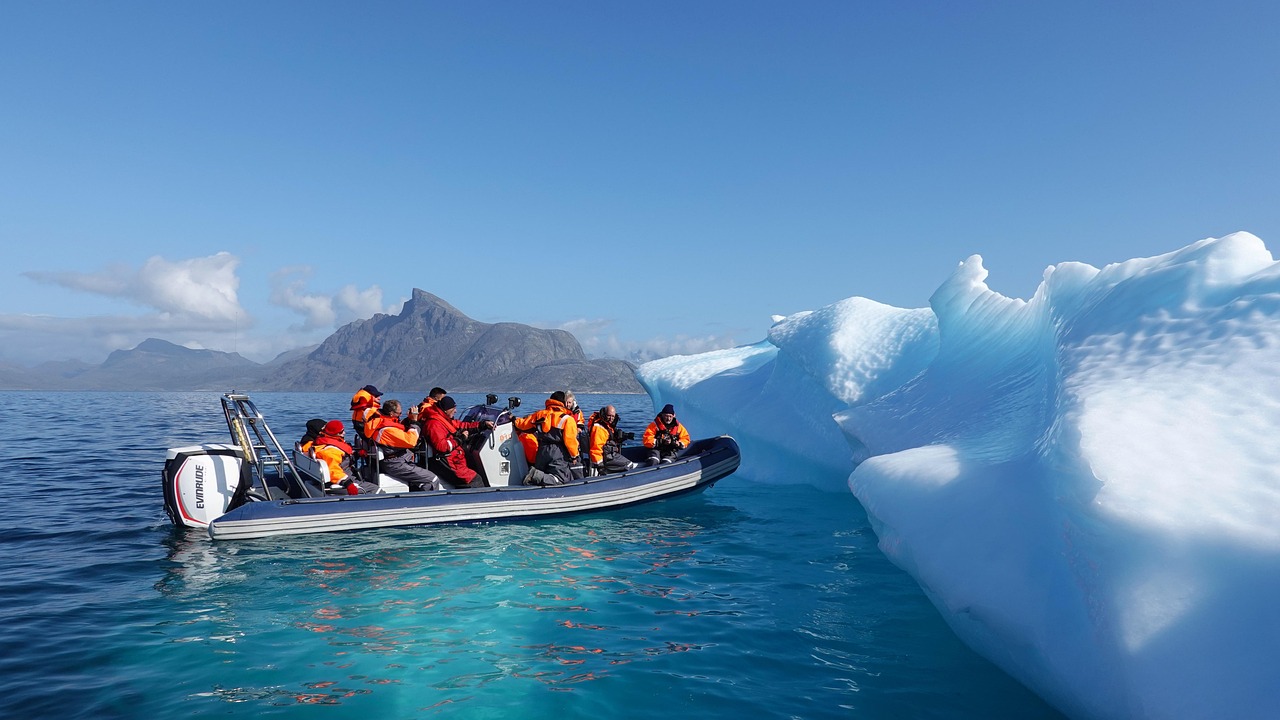Harnessing the Power of the Polar Express: A Look at the Boom in Arctic Tourism
Arctic tourism, once considered a niche market for extreme adventurers, has surged in popularity in recent years. This unique travel trend offers a magical blend of untouched landscapes, glacial adventures, and a chance to witness the ethereal Northern Lights. This article delves into the rise of Arctic tourism, its impact on travelers, and the challenges it poses.

The Emergence of Arctic Tourism
Arctic tourism has its roots in the expeditions of early explorers who ventured into the icy wilderness in search of new territories and trade routes. With advancements in transportation, technological innovations, and the growth of the tourism industry, what was once an unattainable dream became a reality for many. Today, Arctic tourism has become a trend, offering travelers a chance to explore the pristine landscapes of the polar region, experience its unique wildlife, and immerse themselves in the culture of its indigenous communities.
The Allure of Arctic Adventures
The Arctic region’s unique offerings have played a significant role in its growing popularity. The chance to witness the Northern Lights, also known as Aurora Borealis, is a top draw for many travelers. Other major attractions include dog-sledding, ice-fishing, glacier hiking, and wildlife spotting. The Arctic region is home to a variety of exclusive wildlife, including polar bears, walruses, and various species of whales and seals.
The Impact on Travelers and Challenges
While Arctic tourism brings an array of benefits, it also comes with its share of challenges. Travelers need to be prepared for severe weather conditions and the limited availability of amenities. Moreover, the remote nature of the region can pose safety risks. On the other hand, Arctic tourism has a profound impact on travelers, offering them unparalleled experiences and a deeper appreciation for nature and the environment.
Arctic Tourism: A Balancing Act
The growth of Arctic tourism needs to be managed sustainably to ensure the preservation of the region’s unique ecosystem and the livelihood of its indigenous communities. There are ongoing efforts to promote responsible tourism practices, such as minimizing environmental impact, respecting local cultures, and contributing to local economies.
Practical Considerations and Interesting Facts
- The best time to visit the Arctic for Northern Lights is between September and March.
- Arctic temperatures can drop to extreme lows, so packing appropriately is essential.
- The Arctic region is home to four million people, including several indigenous communities.
- The Arctic’s midnight sun, where the sun doesn’t set for several months, is another unique phenomenon that draws tourists.
In closing, Arctic tourism offers a unique blend of adventure, natural beauty, and cultural immersion, making it a growing trend in the travel industry. It’s a journey that rewards the intrepid traveler with unforgettable experiences and precious insights into our world’s fragile beauty. Through responsible tourism practices, we can ensure that this remarkable part of our planet is preserved for future generations to explore and appreciate.




